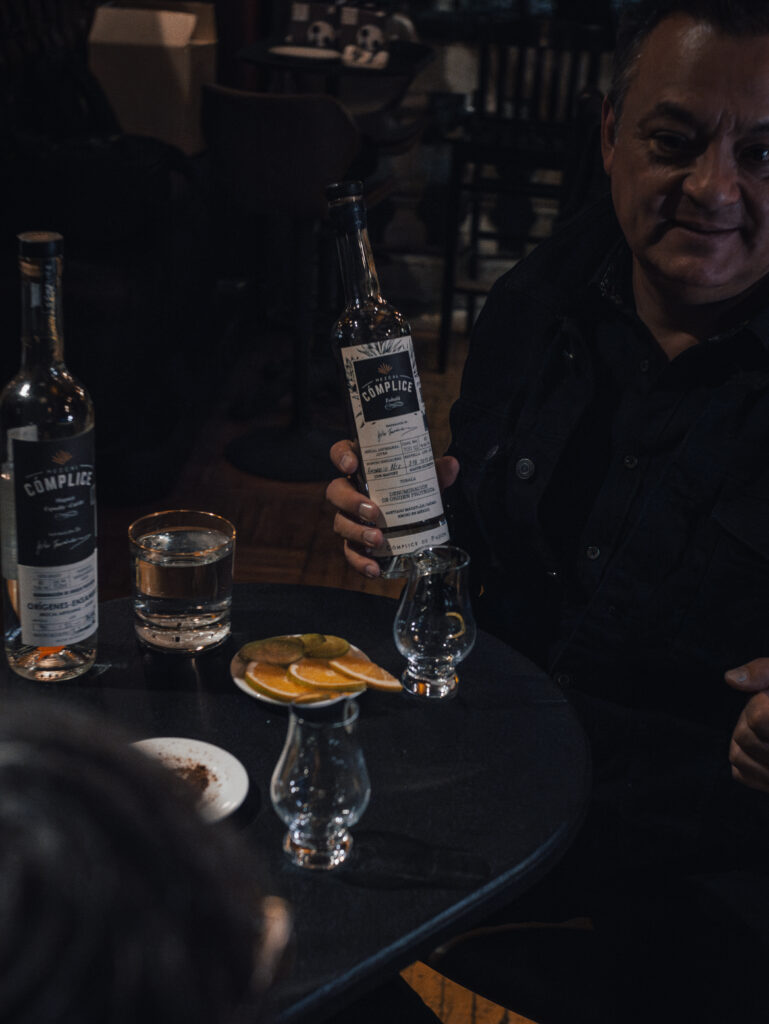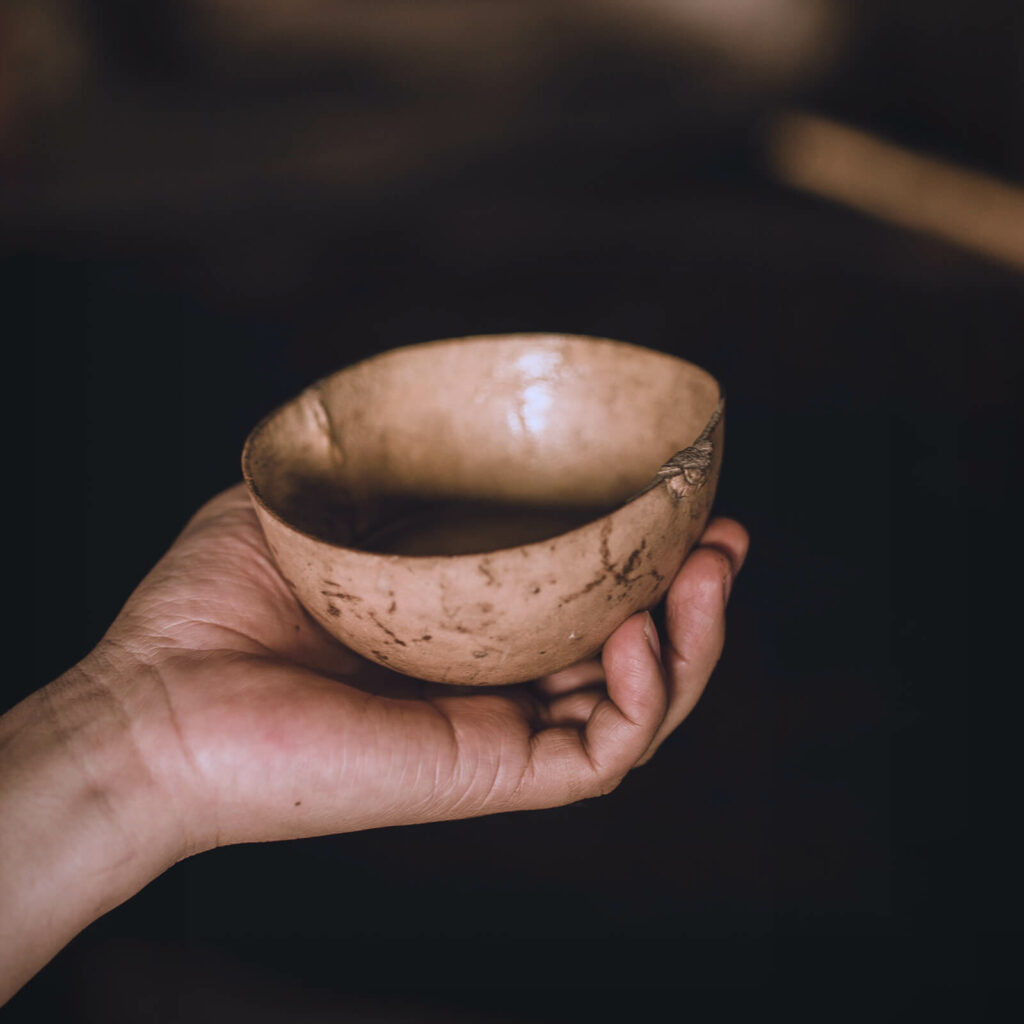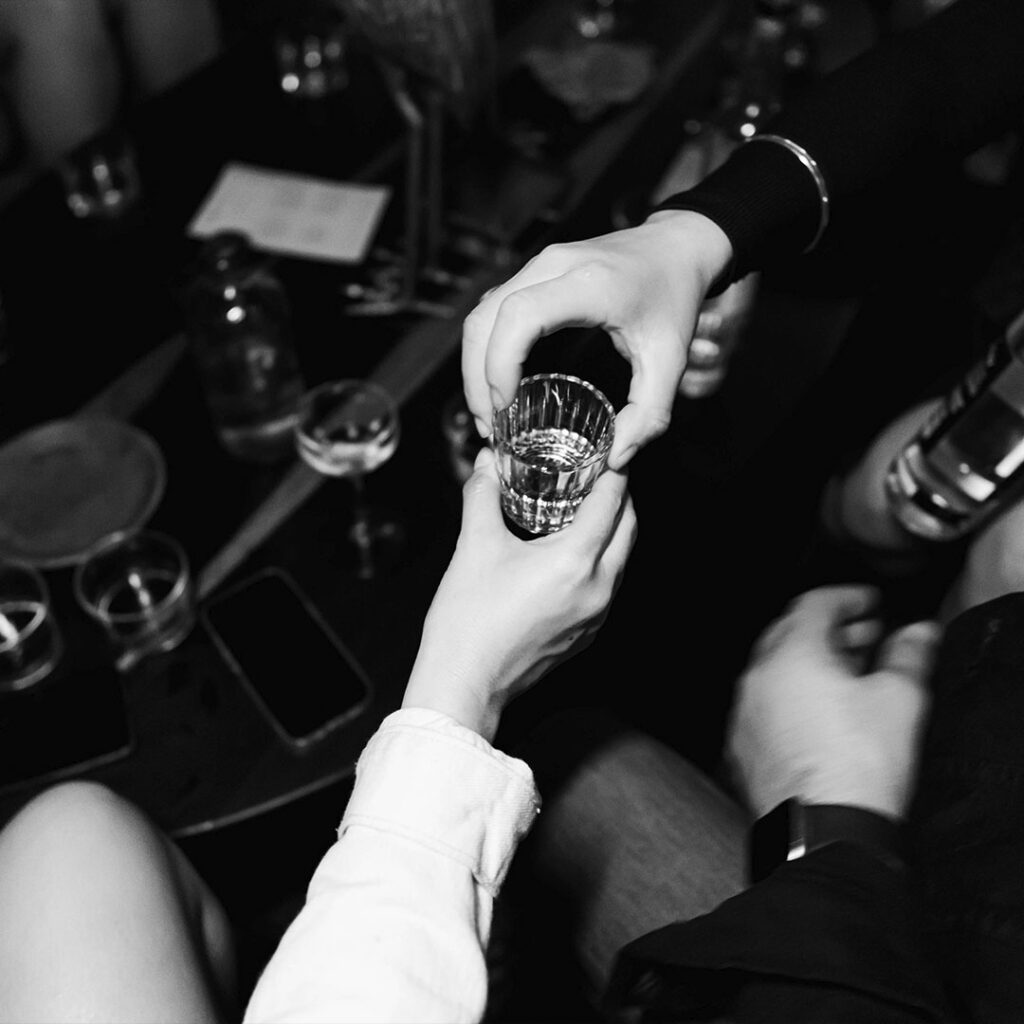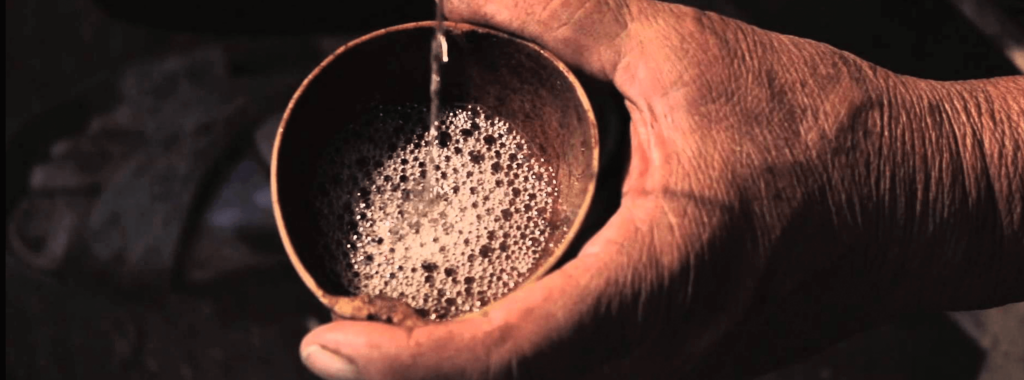Mezcal is more than just a drink; it’s an experience, a tradition, and for many, a way of life. Whether sipped from a jícara, a votive candle holder, or a shot glass, the way mezcal is consumed can influence the overall tasting experience. But does the glass really matter? Let’s explore the different ways mezcal has been enjoyed over time and how the shape of a glass can change the way we appreciate this rich, smoky spirit.

Read more: The Great Agave Distillates: Differences Between Mezcal and Tequila
Traditional Ways to Drink Mezcal
The Jícara
Before glassware became common, mezcal was traditionally served in a jícara, a small bowl made from the dried fruit of the calabash tree. This rustic and organic vessel allows the drink to breathe, enhancing its flavors and aromas. The porous surface also helps maintain the mezcal at a consistent temperature, making it a favorite choice for traditionalists.

The Votive Candle Holder
Another historical way to drink mezcal is from a votive candle holder. Originally used in spiritual rituals, this small glass container found its way into mezcal culture, particularly in Oaxaca. While it doesn’t necessarily enhance the aroma or taste, it carries a cultural and mystical significance, making the act of drinking mezcal feel almost ceremonial.

Modern Serving Methods
The Shot Glass (Caballito)
In restaurants and bars, mezcal is often served in a caballito, the same type of glass commonly used for tequila shots. While convenient, this narrow glass does not allow the drinker to fully appreciate the complex aromas of mezcal. The alcohol vapors escape too quickly, limiting the depth of the sensory experience.
Grappa Glass and Snifter
For those who truly want to savor every note of their mezcal, a grappa glass or snifter is the way to go. These glasses have a wide bowl and a narrow top, allowing the aromas to concentrate before reaching the nose. This enhances the overall experience by balancing the smoky, earthy, and fruity notes of the mezcal.
Why Glass Shape Matters
The Role of Aromas in Mezcal Enjoyment
Mezcal is packed with unique aromas, from smoky and herbal to fruity and floral. The way these aromas are perceived depends largely on the shape of the glass. A glass that directs the scent towards the nose allows drinkers to fully appreciate mezcal’s complexity.
Alcohol Evaporation and Glass Design
Glasses without a neck, such as jícaras and shot glasses, allow alcohol vapors to dissipate quickly, sometimes overpowering the subtler aromas. On the other hand, a properly designed mezcal glass can control the evaporation of ethanol, ensuring that the drink’s essence is not lost before it reaches your senses.
The Official Mezcal Glass (Since 2009)
How It Was Designed
Recognizing the need for a proper mezcal glass, a group of mezcal experts and connoisseurs came together in 2009 to design the ideal vessel. The result was a glass with an elongated shape and a wider bottom, specifically made to enhance the drinking experience.
Advantages Over Other Glasses
The official mezcal glass helps to concentrate aromas while allowing the spirit to breathe. This makes it easier to identify different notes and appreciate the full complexity of mezcal. While it doesn’t replace the tradition of drinking from a jícara or a votive candle holder, it provides an excellent option for those who want to elevate their tasting experience.
The Only Rule: Enjoy Mezcal However You Want
Breaking Traditions in a Modern Era
While experts may debate the best way to drink mezcal, the truth is that there’s no single correct method. Whether you prefer a jícara, a shot glass, or the official mezcal glass, the most important thing is to enjoy it.
Mezcal Is About the Experience, Not Just the Glass
Mezcal is meant to be shared, toasted with, laughed over, and even cried with. It doesn’t matter what you drink it from; what matters is that you embrace the spirit of mezcal. So, grab a glass—any glass—and enjoy every sip of this remarkable Mexican distillate.
Read more: Drinking Mezcal: Why Shouldn’t You Cool Mezcal?
